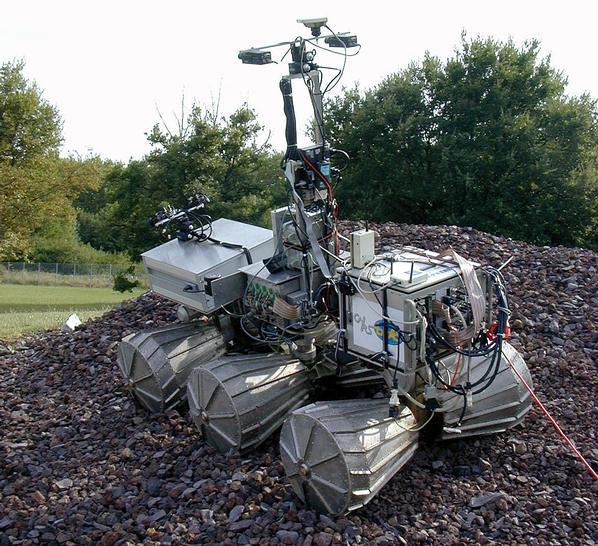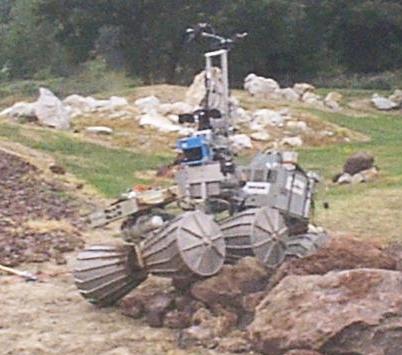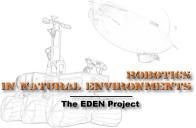The motion control (or locomotion) system is in charge of controlling
the wheels in order to execute as precisely as possible geometric
trajectories or velocity commands, such as a couple of translational and
rotational speeds. On rough terrains, this control problem is
particularly difficult to achieve, as significant differences between
the reference motion and the actual motion often occur. This is mainly
due to strong wheel slippages caused by loose soil or rough rocky areas.


Two difficult situations for locomotion: a steep gravel
slope and a rough rocky area to traverse
The problem is that the easiest and cheapest way to measure these
differences is odometry, which by
essence can not detect slippages. In the absence of other means to measure
the motions at high rates, one must develop enhanced motion control strategies to
prevent slippages as much as possible, and to detect them when they occur.
Moreover, there are situations where the application of simple motion
commands to all wheels does not help to move at all. For instance, in the
case of loose soil slopes (gravel or sand), all the wheels can slip
together, which results in null motions (or even backward motions !). The
rover Lama is endowed with a peristaltic motion mode, which can
help to cope with such situations.
| |
General Information
Robots
Rovers Navigation
Autonomous Blimps
Multi-Robot Cooperation
|



